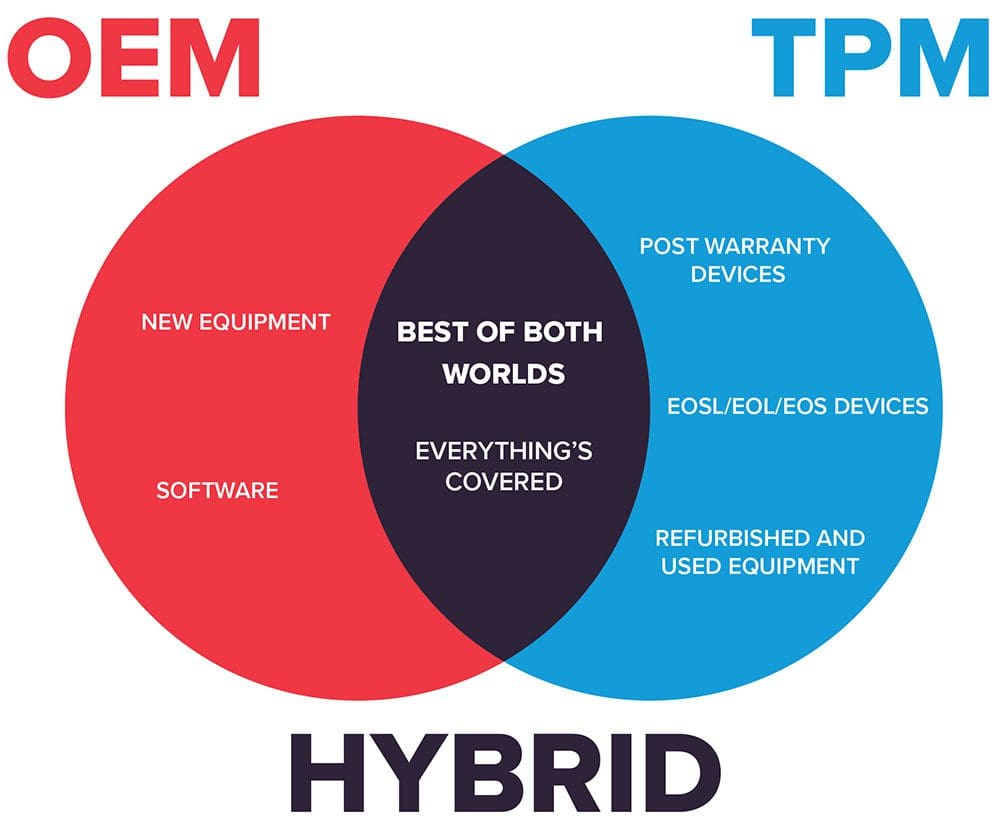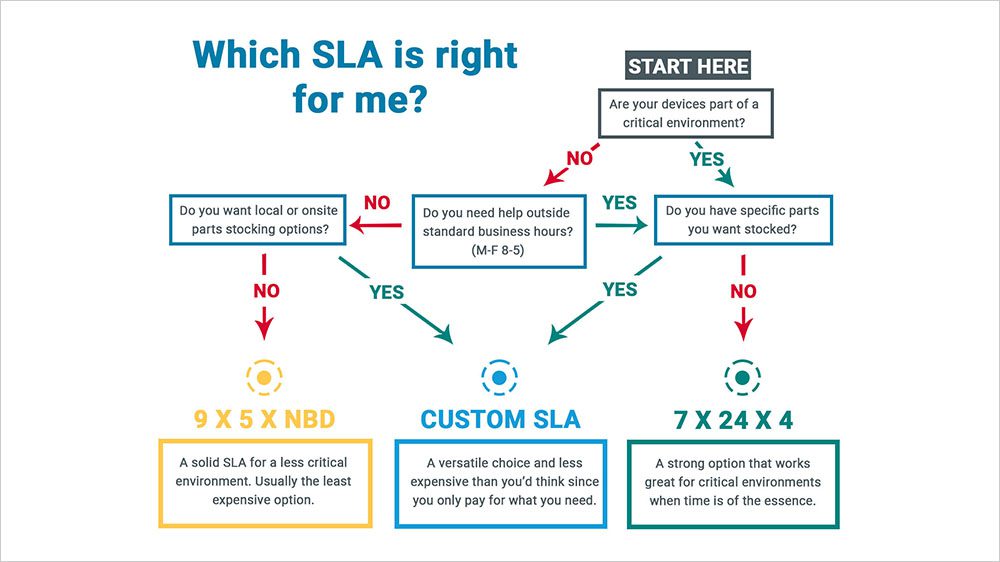Is a Hybrid Maintenance Strategy Right for You?
OEM Support & TPM Working Together to Keep You Covered
Hybrid maintenance plans are becoming more widespread in data centers across the country. One study even claims that half of companies worldwide are opting for some combination of hardware support from manufacturers and third party sources. There's a good chance that your data center environment could benefit from a hybrid maintenance strategy, too.
What is a Hybrid Maintenance Strategy?
A hybrid maintenance strategy is where some equipment or software in a data center is left under warranty with the OEM and other devices (usually legacy systems, older equipment, or devices that have gone EOL & EOSL) are put on a support contract with a third party maintenance provider, such as M Global. As companies have become more aware of the possibilities and benefits associated with third party maintenance, a hybrid hardware support approach has become increasingly common, especially for devices further along in their lifespan.

Benefits of a Hybrid Maintenance Plan
The beautiful thing about hybrid maintenance is that you can customize a strategy that makes sense for your environment. Rather than thinking of it as either/or (OEM warranty or TPM support), think of it more like a fluid cycle. When the OEM warranty expires on newly purchased equipment (usually after 3 years), you will be faced with the decision of purchasing new devices, renewing your OEM warranty (if applicable), or getting a third party support contract. And that decision will rarely be a static one.
Save Money by Combining TPM & OEM Support
A key benefit of creating a hybrid maintenance strategy for your data center is cost savings. Not only can you save money on hardware support (over renewing your OEM support contracts), but adding in TPM support on your post-warranty assets can make revisiting your hardware refresh cycle possible. Rather than blowing your CapEx budget on all new equipment, you could extend the life of devices that are still functional without worrying about failures and costly downtime.
What to Keep In Mind When Building a Hybrid Maintenance Strategy
Every environment is a little different, and the unique combination of staff resource availability and skill, the threshold for risk, budgetary constraints and comfort level with support outside of the manufacturer will determine the right mix for you. Knowing that you can find a balance that meets your needs can be a huge relief. Aside from obvious budget concerns, here's a few things to keep in mind as you build out a hybrid maintenance plan.
What's your comfort level with third party support?
For some companies, introducing a hybrid maintenance plan can be unfamiliar territory. Companies unfamiliar with support outside the manufacturer may be hesitant about adopting a hybrid strategy that includes keeping post-warranty devices especially in critical environments. But if you are one of the many companies who are familiar with TPM support and its advantages, you may be comfortable keeping devices beyond their initial warranty period and getting hardware support through a third party provider.
How critical is your environment?
Environments that are crucial to day-to-day operations will naturally get special treatment. That means the newest equipment, support 24/7, and component upgrades will be prioritized to the most critical areas. Regardless of your budget, this will likely be at the forefront of your decision-making process. Your company might have a policy that does automatic hardware refreshes when the OEM warranty expires in your critical environments. Or you might be looking for ways to make sure essential devices can have the most complete hardware support coverage available.
One way to ease into a hybrid maintenance plan is to transition post-warranty gear to less critical environments, such as Testing or Dev environments. TPM support contracts on those devices will ensure they still run smoothly while allowing you to get comfortable with your new hardware cycle. If you need additional devices, taking advantage of the significant cost savings of refurbished equipment can be less daunting in less critical environments, too.
That's not to say that older devices can't be used with great success and minimal risk in critical environments, too! Many companies have found a hardware maintenance equilibrium that is impressive in its efficiency and utilization of resources. We've covered many critical environments in our time with great results. Of course, matching the SLA to your needs is a key to that success. We'd recommend going with an SLA that allows for 24/7 support, such as the 7x 4 x 24 or a customized SLA.
How much redundancy do you have built in?
Built-in data center redundancy can also impact hardware maintenance plans. If you've got multiple devices or components waiting in the wings in the event of a failure, the more comfortable you may be with keeping devices after their OEM warranty has expired. It's still a good idea to put them under a TPM support contract, but you might not need to purchase new devices, and you definitely don't need to spend a ton more renewing an OEM warranty.
Let M Global Help
Whatever you decide — M Global can help make it happen. Maybe you want to start small and just transition a few devices to TPM support, or maybe you are ready for TPM support to play a much bigger role in your hybrid maintenance strategy. Whatever the case — M Global's got you covered. We can help you come up with a plan that will work for you. And for those devices that may be better to keep under OEM warranty for one reason or another, that's completely fine. We'll come up with a cohesive plan that will incorporate the best solutions for your data center. Give us a call or fill out a form to find out more!
Get Started Now
We want you to consider us an extension of your team, a trusted resource and advisor. Call us today at 855-304-4600 to find out more.




